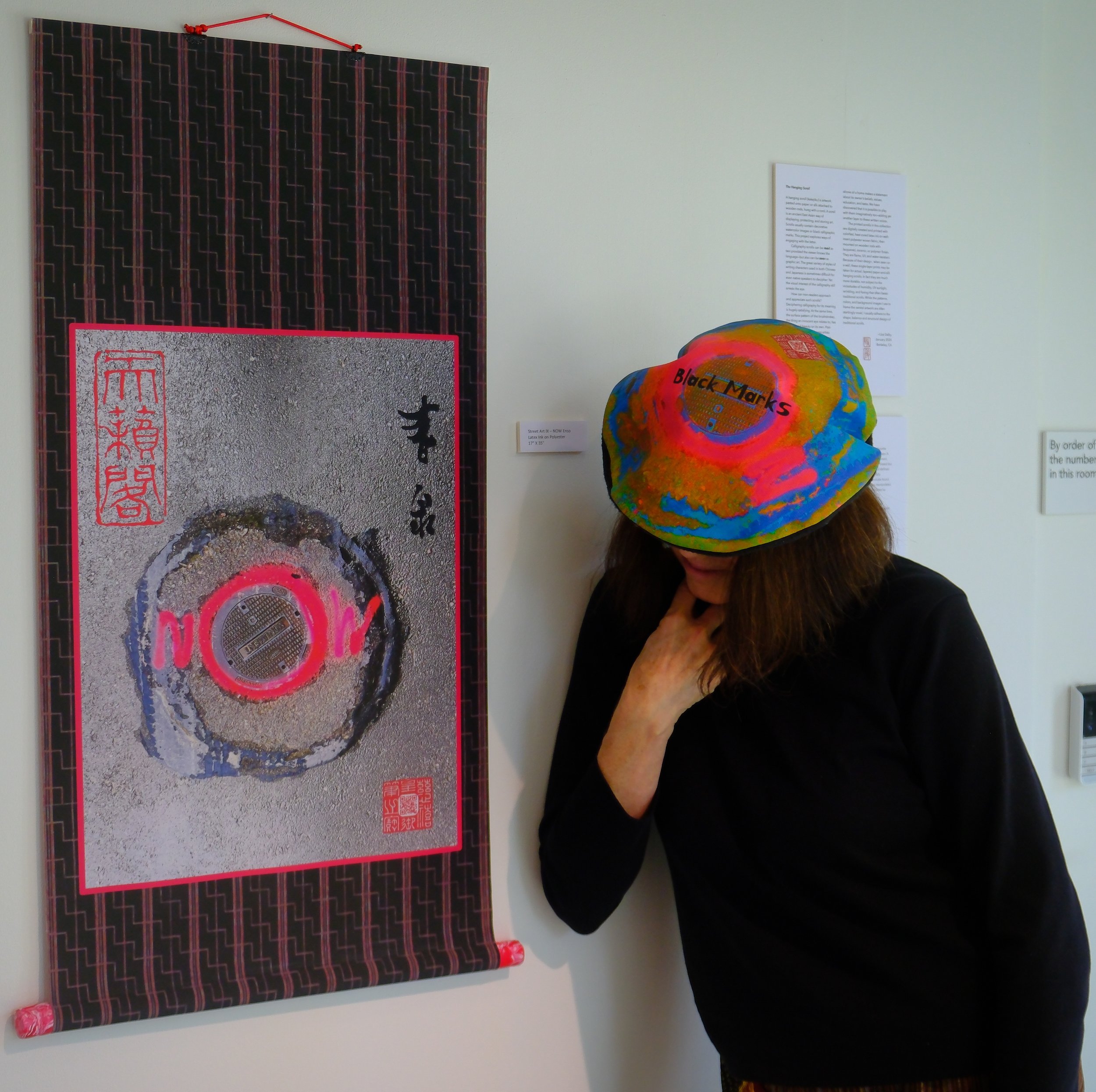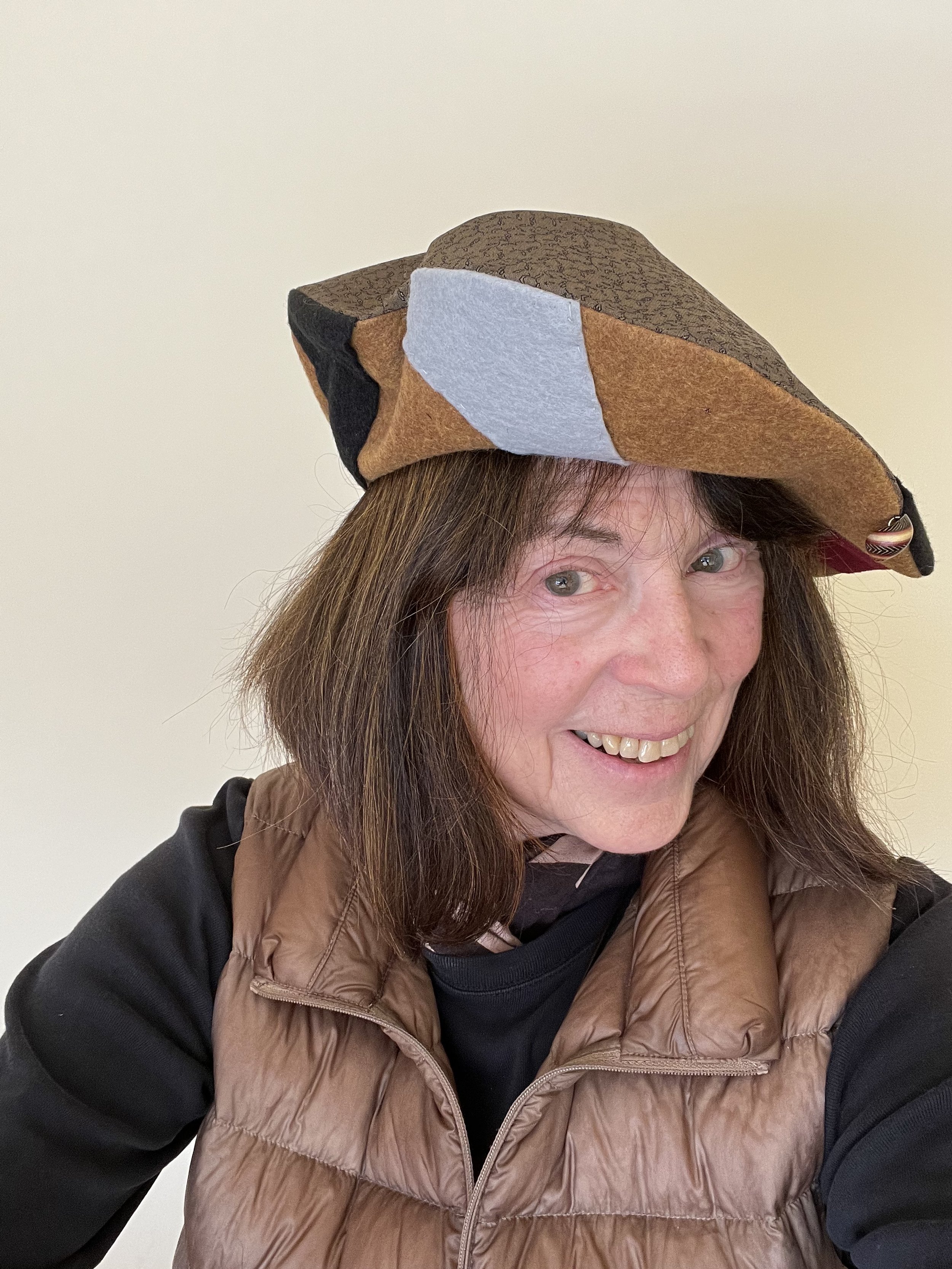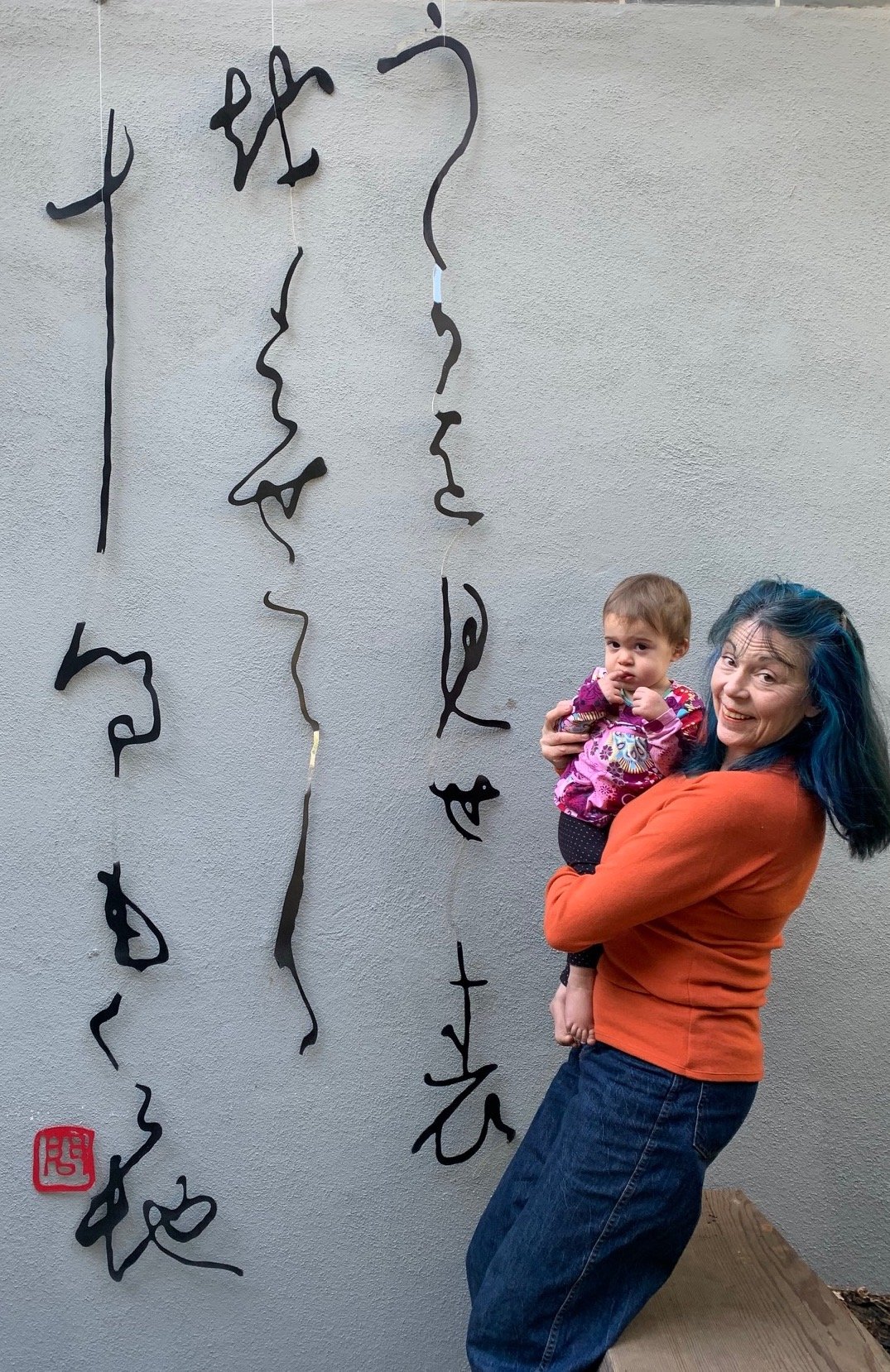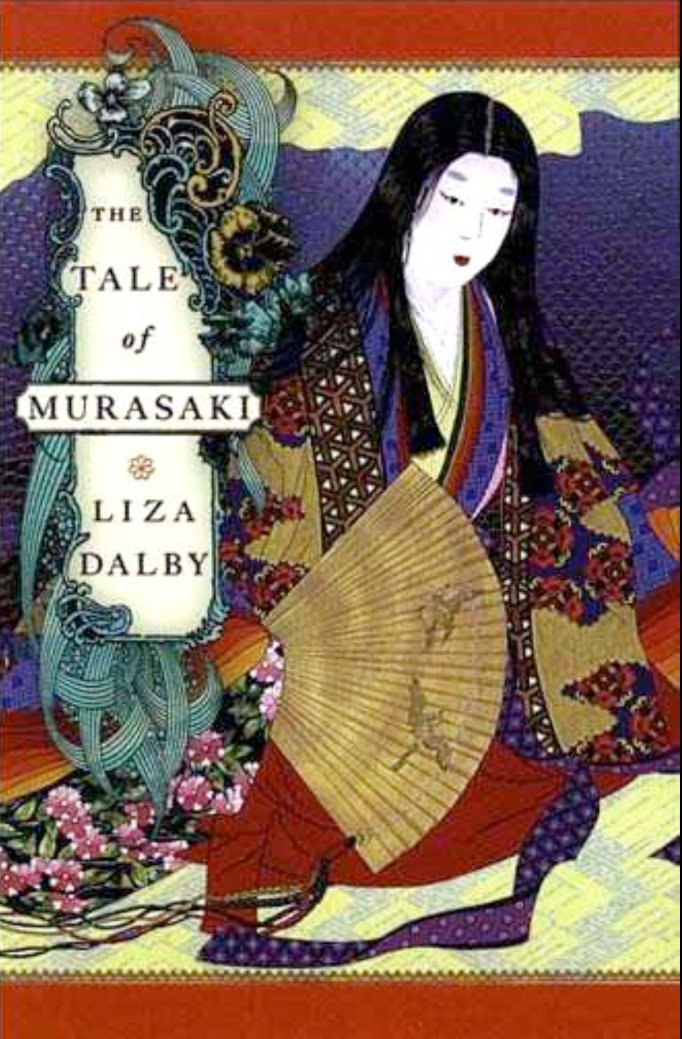Liza Dalby is an anthropologist, author, and translator specializing in Japanese culture. Currently she makes traditional hanging scrolls, and modern variations thereof.
projects
A hanging scroll (kakejiku) is artwork pasted onto paper or silk attached to wooden rods, hung with a cord. A scroll is an ancient East Asian way of displaying, protecting, and storing art. Scrolls usually depict decorative watercolor images or black calligraphic marks. This exhibit explores ways of engaging with the latter.
Inspired by this well-known Zen riddle, the MU KORABO (MU Collaboration) project joins calligraphy and art produced by an international range of artists in non-conventional renditions of the traditional Asian hanging scroll.
Radical Display
Experiments in displaying calligraphic forms and unconventional mountings.
books
GEISHA
University of California Press, 1983, 2008
GEISHA combines ethnography with a view from the inside. Liza Dalby was accepted into the geisha community of Pontochō in Kyoto for a yearlong stint under the geisha name Ichigiku. This account of her unique experience provides an intimate look into a feminine community that has been the subject of rumor and fantasy for centuries in the West. In explaining the beauty of the paradox of geisha today, she holds up a mirror to the complexities of Japanese culture itself. She leads the reader to a rich understanding of Japan and one of the most Japanese of all existing institutions.
KIMONO - Fashioning Culture
University of Washington Press, 2001
"Ms. Dalby has a great deal to tell, starting with her contention that clothing and wearer merge in Japan more than in most places. . . . [She] offers a tour of the cultural collisions that have become part of the fabric not just of the kimono but of modern Japan. It is a tour well worth taking." --Wall Street Journal
"The force behind this excellent book is Dalby's personal passion for the whole cultural realm she discovered while learning to wear kimono with the exacting perfection of a professional, which meant learning to feel natural in it."--Ann Hollander, Yale Review
"A lively, informative study of the kimono, tracing its evolution throughout Japanese history to its current status as the national dress of Japan. [Dalby's] book's coverage includes all types of 'native' dress, past and present; her unique position as a Western 'insider' allows her to demystify the complex social mores connected with wearing the kimono. . . At once scholarly and enjoyable reading."--Journal of Japanese Studies
"Kimono is as elegantly designed as its topic. Lavishly illustrated and visually stunning . . . the text is every bit the equal of this graphic richness. In language simple but strikingly patterned, it weaves its way through technical details and historical arcanities with panache and color. . . . Such is the variety of lenses focussed upon its topic that the book will engage interests ranging from pop culture to literary history."--Mangajin
The Tale of Murasaki
Doubleday, Nan Talese Books. 2000
“The most famous work of Japanese literature is the eleventh-century Tale of Genji, written by a woman of the Emperor’s court. Piecing together existing fragments of diary and poems, Liza Dalby frames Murasaki’s own words and imagws in a gorgesou work of literary archeology, which includes the imaginary lost final chapter of Murasaki’s great work.
The Tale of Murasaki delicately conjures up not only a woman’s life at the imperial court—a strange, sophisticated place of political and sexual intrigue, of male power and female manipulation—but also life in the backwaters of provincial Japan almost a thousand years ago.”
~ from the Chatto & Wyndus edition, London. 2000
East Wind Melts the Ice
University of California Press, 2005
“Writing in luminous prose, Liza Dalby, the acclaimed author of Geisha and The Tale of Murasaki, now brings us this elegant and unique year's journal—a brilliant mosaic that is at once a candid memoir, a gardener's diary, and an enlightening excursion through cultureseast and west. Structured according to the seasonal units of an ancient Chinese almanac, East Wind Melts the Ice is made up of 72 short chapters that can be read straight through or dipped into at random. In each, Dalby transports us from her Berkeley garden to the streets of Kyoto, to Imperial China, to the sea cliffs of Northern California, and to points beyond. Throughout these journeys, Dalby weaves her memories of living in Japan and becoming the first and only non-Japanese geisha, her observations on the recurring phenomena of the natural world, and provocative meditations on the cultural aesthetics of Japan, China, and California. Illuminating everyday life as well, she tells of keeping a pet butterfly, roasting rice cakes with her children, watching whales, and pampering worms to make compost. In the manner of the Japanese personal poetic essay form, this vibrant work comprises 72 windows on a life lived between cultures and the result is a wonderfully engaging read.”
Hidden Buddhas
Stone Bridge Press, Berkeley, CA. 2009
Hidden Buddhas may well be Liza Dalby’s best work yet, with its fascinating story of characters caught up in a world they themselves don’t understand. Besides taking us on a journey through little-known corners of Japan, it offers us an engaging and believable portrait of people driven to do things they may not have imagined.
Arthur Golden
A story about the power and danger of the impulse to secrete things away, Hidden Buddhas explores the karmic connections between Japanese fashion design, pilgrimage, dying honeybees, bad girls with cell phones, murder by blowfish, and the Buddhist apocalypse.
Places
translated Memoir of Setouchi Jakuchō
University of Hawaii Press, 2021
In this scintillating work of autobiographical fiction, Setouchi Jakuchō recalls with almost photographic clarity scenes from her past: growing up in the Tokushima countryside in the 1920s, the daughter of a craftsman, and in Tokyo as a young student experiencing the heady freedom of college life; escaping to Kyoto at the end of a disastrous arranged marriage and an ill-starred love affair before returning to Tokyo, with its lively community of artists and writers, to establish herself as a novelist. Throughout, Jakuchō is propelled by a burning desire to write and to make a living as a writer. Her memories, sharp and clear, also provide a fascinating picture of everyday life in Japan in the years surrounding World War II.
The ancient Greek word psyche referred to both the butterfly and the soul. What, then, of the butterfly that Liza Dalby encountered at the gravestone of her geisha mother?




















